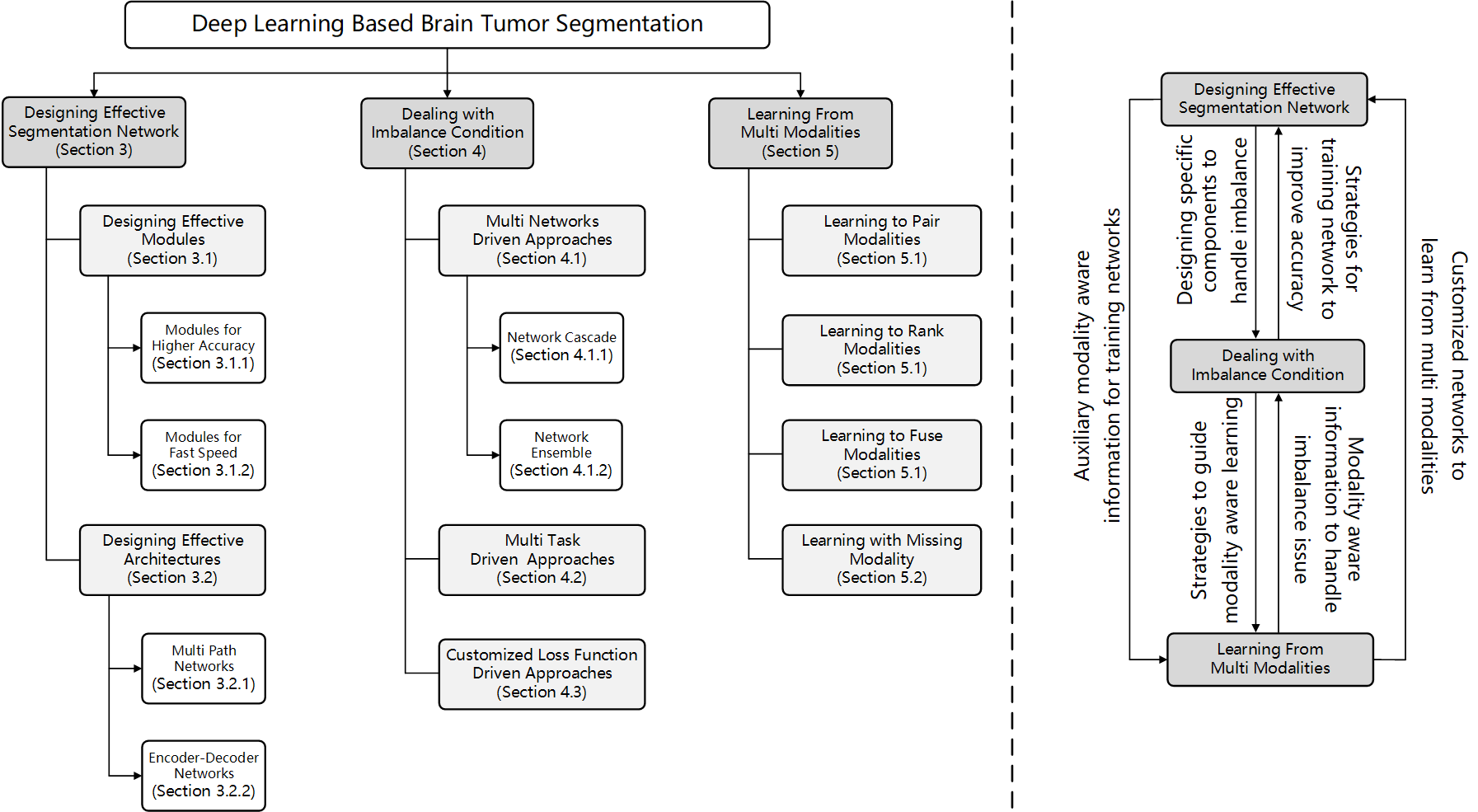A Two-Stage Cascade Model with Variational Autoencoders and Attention Gates for MRI Brain Tumor Segmentation
Automatic MRI brain tumor segmentation is of vital importance for the disease diagnosis, monitoring, and treatment planning. In this paper, we propose a two-stage encoder-decoder based model for brain tumor subregional segmentation. Variational autoencoder regularization is utilized in both stages to prevent the overfitting issue. The second-stage network adopts attention gates and is trained additionally using an expanded dataset formed by the first-stage outputs. On the BraTS 2020 validation dataset, the proposed method achieves the mean Dice score of 0.9041, 0.8350, and 0.7958, and Hausdorff distance (95%) of 4.953, 6.299, and 23.608 for the whole tumor, tumor core, and enhancing tumor, respectively. The corresponding results on the BraTS 2020 testing dataset are 0.8729, 0.8357, and 0.8205 for Dice score, and 11.4288, 19.9690, and 15.6711 for Hausdorff distance. The code is publicly available at https://github.com/shu-hai/two-stage-VAE-Attention-gate-BraTS2020.
PDF Abstract



